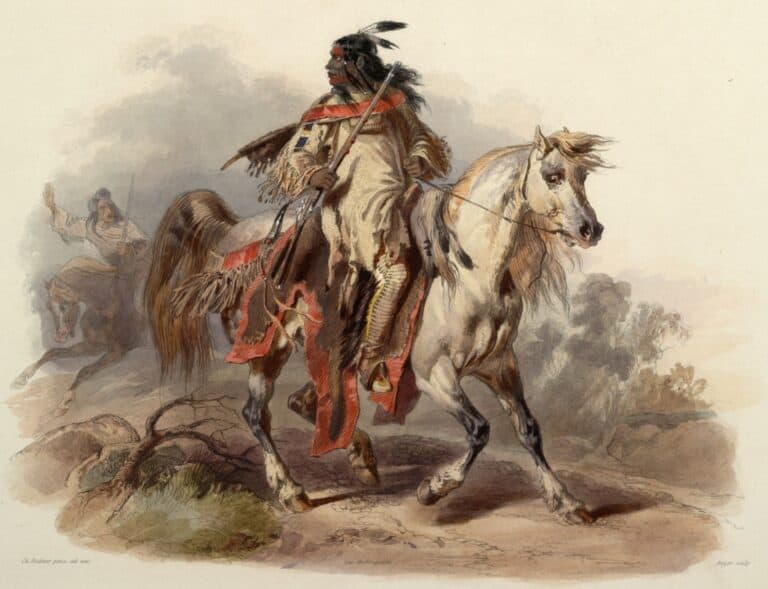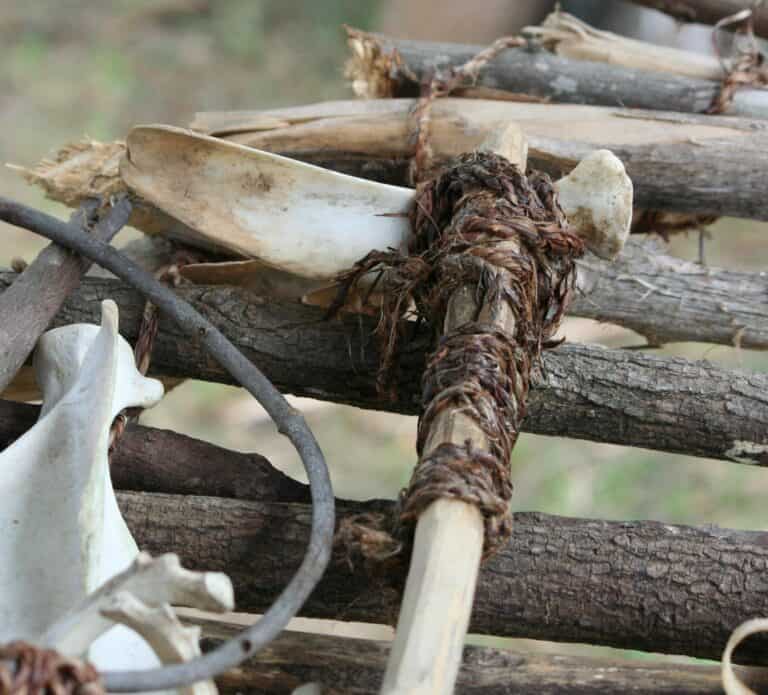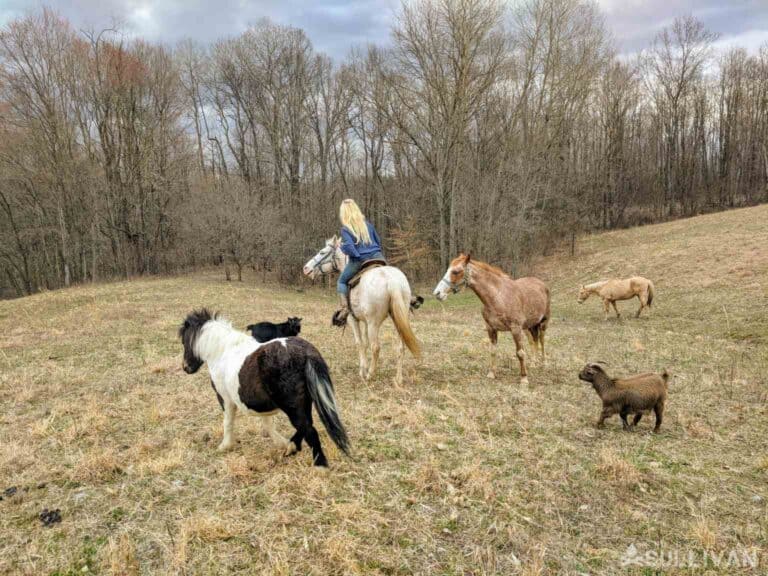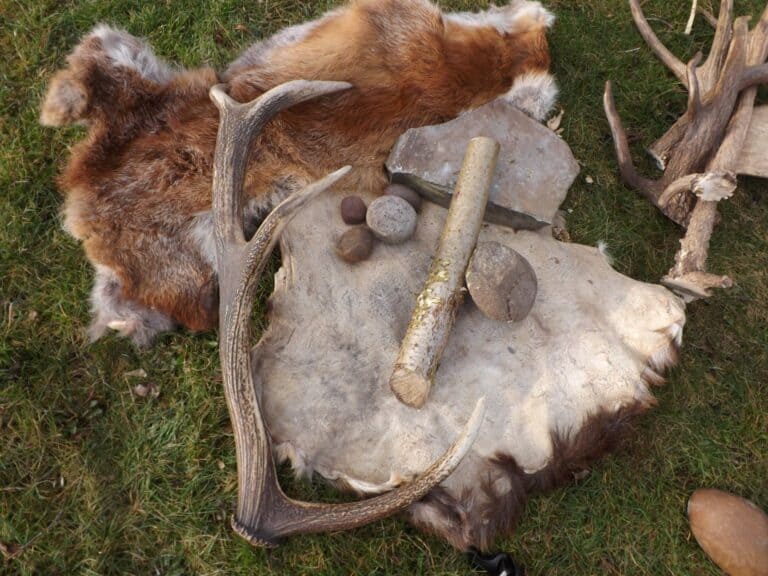The Indians of North America were renowned among the colonists of a burgeoning America for their incredible survival acumen. Co-existing and thriving in nature despite any conditions and setbacks, their prowess was said to border on the super natural.

We can all admire their holistic skillfulness, and a smart prepper will seek to learn from these ancient peoples and adopt their ways for their own purposes.
Native Americans had a special knack for living off of the land.
When some think about how they manage to make use of every sort of thing in nature to survive and thrive, one might think that they were extraordinary in their abilities.
But you don’t have to be from a Native American tribe to know how to survive like them. The secret to their survival is quite simple.
Below you’ll find several such skills that you’d be smart to practice and incorporate in your own survival repertoire!
Table of Contents
Mastery of Adaptation
The Indians were experts at adapting to their surroundings. They were constantly learning and evolving as conditions changed, and were able to do so without disrupting their way of life.
For instance, when the Europeans arrived and introduced new technologies, the Indians quickly learned how to use them and incorporate them into their existing way of life.
This adaptability is critical in a survival situation. Things rarely go according to plan, and you need to be able to adjust on the fly.
If your shelter is destroyed or your food runs out, you need to be able to improvise and find a new solution. The ability to think on your feet and come up with creative solutions is key to survival.
The Indians were also masters of using what they had available to them.
They didn’t have access to fancy materials or high-tech equipment, but they were still able to create everything they needed using the resources around them. This resourcefulness is another important quality in a survival situation.
In order to be successful in a survival situation, you need to be adaptable and resourceful. You need to know how to use what’s available to you and how to make the most of what you have.
You can’t afford to be reliant on others or on outside sources; you need to be able to take care of yourself.
Learn How to Lean on Someone Else’s Skillset
First, a tribe wouldn’t survive as a tribe without working together and depending on each other for help. Do not mistake this as being co-dependent.
Armies are stronger when they rely on each other’s individual skills that will in turn benefit everyone as a whole. Each person is a valuable commodity because each person possesses skills that are unique to that person.
True, people can survive on their own for many years, but humans are social creatures. We need regular interaction with other people in order to thrive mentally, emotionally, and socially.

Learn How to Use Basic Survival Tools
Basic survival tools consist of tools that are very easy to make, which doesn’t take an advanced skillset to use, and have withstood the test of time.
Let’s take a look at a few basic tools that Native Americans have used for thousands of years.
Knives – No doubt the first tool that popped into your mind was the knife. It is one of the most basic and most widely used tools around.
Knives come in a variety of shapes and sizes for a variety of uses. Knives function as a simple multi-tool. With just one good and sharp knife, you can:
- Hunt
- Fish
- Clean the fish
- Cut wood
- Finely strip vines to make rope
- Cut cords, ropes and vines
- Defense
- Creation of new weapons like bayonet
- Medical procedures
- First aid
- Climbing
As you can see, the knife is really a multi-purpose tool.
Ax- Similar to a knife, but mainly used for cutting wood, the ax is also a favorite. It is very simple to use.
The Native Americans were limited to the types of axes available, so they made them fit their need. Today, you have many types to choose from. These axes are best for survival:
- Felling Ax (Full sized) – This ax has a long handle and is mostly used for cutting down trees.
- Hatchet – Smaller handle than the felling ax, the hatchet performs smaller jobs. Unlike the full sized felling ax, the hatchet was designed for one-handed use. The hatchet is the favorite ax among the Native American tribes.
- Pocket Ax – This little guy packs a punch in a pinch. It handles the job that its bigger contemporaries can’t handle because of their length.
Axes can also be used as a method of self-defense when something threatens your livelihood. Learn how to use axes when defending yourself so you can wield it effectively.
No-Tech Communications
The Indians were able to communicate with each other without the use of technology. They used a variety of methods, including hand signals, smoke signals, and war cries.
Runners would be used to relay complex messages reliably in a timely fashion that was reasonably secure against intercept.
You need to be able to communicate with others without relying on gadgets. This can be done through simple means such as hand signals, vocalizations, or written notes.
If you’re separated from your group or if the lines of communication are down, you need to be able to communicate on your own.
This may be the only way to get information or instructions, and could be the difference between life and death. It’s also important to be aware of your surroundings and understand what’s going on around you.
The Natives were very good at this; they could read the signs and understand what was happening in their environment. This allowed them to anticipate danger and take action to warn others against it.

Undisputed Experts of Horsemanship
The Indians were undisputed experts of horsemanship. They had a deep understanding of horses and their behavior, and knew how to use them effectively in battle.
This knowledge was passed down from generation to generation, and is still used by Native Americans today.
The horse was the single best and fastest mode of all-terrain transportation back then, and it is one that has significant advantages today.
Particularly in the case of a long term survival scenario, horses might be your only option for remaining mobile over long distances reliably.
While it may not be practical to keep a horse in your backyard, if you live in an area where they are available, it’s worth learning how to ride and care for them.
Even if you don’t own a horse, the skills can serve you well if you are able to acquire one.
They could be a valuable asset in a survival situation. If you can’t find working automotive transportation or if you’re stranded in a remote location, a horse can be a lifesaver.
They can help you carry supplies and equipment, and can even be used as a source of food in desperation.
Knowing how to ride a horse is one thing, but upkeep is another. The Indians knew this and devoted considerable resources to the job.
They understood that a horse is only as good as its caretaker, and took great care in raising and training their horses.
Intricate Knowledge of the Landscape
The Indian tribes were intimately familiar with the landscape in which they lived.
They knew every inch of their territory, and could navigate it easily both on foot and by canoe or horseback. They understood when terrain would be treacherous and how to avoid it, navigate it or set an ambush in it.
They also knew what resources were available in each area, and knew how to find them. They knew when certain plants and animals were in season, and where to find them.
This knowledge was not just useful for day-to-day living; it was also critical for survival.
In the event of a natural disaster or other catastrophe, knowing the land could mean the difference between life and death. It would allow them to quickly evacuate to safety with certainty, or find food and shelter in an unfamiliar area.
In a survival situation, it’s important to know your surroundings like the back of your hand. If you’re in a location you’re not familiar with, take the time to learn about it before something happens.
Know where the closest safe haven is, what the fastest way to get there is and what kind of resources you can expect to be available when you get there.
If you’re forced to evacuate, you’ll be glad you took the time to do your homework!
Looking online or in a book is not enough. You need to get out there in it. The Indians lived that way, a part of the environment.
Today we live apart from the environment. We have forgotten how to read the signs. The ability to live off the land is critical for survival, and can be learned if you have the right instruction.
The Indians had this instruction passed down from generation to generation, but it’s also something that can be learned in today’s world.
Learn How to Heal Yourself Using Nature
Nature possesses so many valuable items that you can use for everything from constructing a home to curing an illness. You just have to know where to look and where to find them.
In regards to survival, you’ll need to know how to use the plants available to you in nature in order to heal yourself when you become ill. Here are a few examples of what’s freely available and how these plants can help you:
- Boneset herb boiled into a tea is commonly used to reduce fevers and body aches that accompany the common cold,
- Skunk cabbage boiled helps fight asthma and promote respiratory health,
- Catnip tea relieves painful gas,
- Bark from a dogwood or willow tree boiled in hot water, reduces fevers,
- A tea made from Pennyroyal leaves relieves headaches,
- Alleviate heartburn with dandelion root tea,
- Boiled Geranium tea helps with diarrhea,
- Chew up tobacco leaves and put it on a sting or bite to relieve the effects
- Wild lettuce boiled and drank as a tea serves as a sedative
These are just a few ways to use what’s found in nature to take care of common ailments. Research more Native American herbal remedies, and make a list of plantsto look for in nature.
Learn how to prepare them so that when the time comes, you’ll know exactly what to do in order to heal yourself or your family member of an ailment.
Radical Self-Sufficiency
The Native Americans were the very definition of self-sufficiency, living off the land and taking only what they needed to survive and thrive.
They knew how to find food, build shelter, make clothes, and create tools using only natural resources.
A lot of modern people could learn a thing or two from the Indians about self-sufficiency! If SHTF, it would behoove you to know how to do at least some of these things for yourself.
While you may not be able to recreate everything the Indians had at their disposal, learning even a few basics could mean the difference between life and death in a survival situation.
If anyone needed something, they had to make it. Trade among tribes and later among settlers was not reliable or consistent.
Accordingly, any shortcomings or gaps could potentially be major problems. From weapons and tools to decorations and even vehicles in the form of sledges or canoes, it had to be made by hand.
This radical self-sufficiency extended to all levels of culture in the tribes. The upbringing of a young member of the tribe was fairly a fulltime operation.
Not only did they need to learn how to make everything they needed for themselves and in order to help the tribe, but they also served as a living repository or “backup” of the information.
If anything happened to the current generation of artisans, there would be others who could take up the mantle and keep things going.
In a survival situation, it’s important to have as many people as possible who are self-sufficient and able to take care of themselves.
The more people you have who are reliant on others, the greater the chance that something will go wrong and those people will be left without the resources they need to survive.
Learn How to Be Stealth
In other words, learn how to go stealth when you need to. There’s nothing worse than being caught out in the open without any kind of way to camouflage yourself.
The best way to prevent this from happening is to prepare for it before it happens.
If you’ve ever paid attention to old western movies, you would have noticed that when Native Americans are portrayed, they are usually portrayed as very stealthy individuals.
Native Americans learned how to become one with nature, often disappearing in plain sight in order to have the element of surprise.
Contrary to popular belief, most tribes used these stealth techniques when hunting for food… not hunting other humans.
They used a very skillful combination of the Fox Walk and the Wide-Angle Vision (WAV). When combined, they were able to scope out their meals and hunt them without being detected.
How to Fox Walk
To effectively Fox Walk, you must do so without wearing any footwear of any kind. This may be difficult to get use to at first because foot soles are generally very sensitive areas. But sensitive or not, barefoot is best.
It is best because it allows the soles of your feet to feel everything. Your soles will be sensitive to anything that may crack and make noise.
Your mind will be conscious to the fact that you will need to stay as quiet as possible and therefore you will avoid any kind of distractions whatsoever. Allow the sensitivity of your feet to work in your favor.
The perfect Fox Walk consist of making sure your footsteps land with your heels first, then the outside of your foot, and lastly the balls of your foot.
This will take lots of practice until you become familiar with the process. The end result will be you decrease the sound of your footsteps by making less of an imprint.
The more you practice this stealthy walk, the better you will become at it. Eventually you can walk in and out of the forest virtually undetected by anyone including wildlife.
This walking technique is so effective that even the U.S. Navy Seals adopted the method of closing in on unsuspecting targets.
By using your peripheral vision, the wide angle vision technique helps you to become extremely aware of your surroundings, taking in the movements around you as a whole.
Peripheral vision is a valuable resource here. If you have a problem with your side vision, then this technique may not work for you.
How to Hone in Your Wide Angle Vision
- Go outside
- Stand with your hands stretched out in front of you, palms pressed together in a horizontal “praying” position
- Close your eyes and take a deep breath
- Open your eyes
- Focus on your hands in front of you.
- Slowly pull your hands apart and stretch them out until you are holding them out as if you just stretched.
- Then wiggle your fingers.
- If you can see the that movement with both of your peripherals then you are experiencing WAV
Mastering these stealth techniques along with developing your basic survival tool skills will help you to survive like the Native Americans did.
Their way of survival was very simple, and it utilized nature in order to make it successful. Quite frankly they didn’t need a lot to survive. But managed with what they had.
By learning to use basic tools such as the knife and ax, they were able to multi-task by building, hunting, fishing, cleaning, and defending. You can learn it too.
Following the steps outlined here and adapting it and making it your own can help you become more efficient. Master the Fox Walk and sharpen your wide angle vision to master the art of going stealth and disappearing in plain sight.
Preservation of Crucial Foodstuffs
The Indians were experts in food preservation. They knew how to dry and store food so that it would last for months or even years.
This was a crucial skill, as it allowed them to survive during times of famine. It also meant that they could take advantage of seasonal abundance and store food for the lean times.
When it came to meat in particular they really knew their stuff. One famous ration that combined meat with rendered fat and sometimes other ingredients was pemmican.
This provided a high-energy, long-lasting food source that could sustain them on long journeys. The Indians also utilized basic jerky-making techniques to dry and store meat.
This is a valuable skill in any survival situation. If you can preserve food, you’ll be able to have a steady supply even when fresh food is scarce.
There are many different methods of preservation that you can implement, including drying, smoking, pickling and fermentation.
Each has its own advantages and disadvantages, so it’s worth learning about all of them. But if you are going to learn to do just one well, I would say make it smoking or drying.
That’s what the Indians did and it rarely if ever let them down. It can just as easily be employed at home as in the wilderness. You never know when this knowledge might come in handy.

They Made Use of All Available Resources
The Indians were famous for utilizing all parts of plants and animals whenever they could. This is because they understood what precious resources they were!
Bones could be turned into tools, sinews could be used for bowstrings and cordage, feathers for fletching and even the stomachs and other tissues of animals were put to use in all kinds of ways.
This “primitive” frugality is a valuable skill in any survival situation, but more than that it is purely practical! When resources are scarce, it’s important to make use of everything you have.
This not only saves precious materials, but also prevents waste. If you can learn to utilize all parts of what you harvest, you’ll be far ahead of the game.
This extended even to the Indians’ use of fire. They made use of the fire for warmth and light, of course, but also used the ash as a component in various goods and for other purposes.
They even employed controlled burns to revitalize the landscape and create new opportunities for food and game. This was not only a shrewd way to live off the land, but also showed a great respect for it.
The Indians were experts at this ultra-resourcefulness, which allowed them to thrive in some of the harshest environments on Earth.
You can learn from their example and do the same. It may not always be glamorous or comfortable, but it will help you survive.
Sometimes the Old Ways are Best
The Native Americans were masters of survival, and made it look effortless to outsiders. They had to be, in order to survive in the often hostile environments they called home.
But their skills were not just a product of their environment. They were also the result of generations of experience and knowledge passed down from one generation to the next. This was how they survived, and how they thrived.
Their cultures were experts of using the land to benefit them. Everything they created came from things around them.
The same herbal remedies that were used throughout history can be found still being used today. There is a treasury of knowledge to be learned from researching their survival techniques.
When you practice the ones you learned here, you will definitely increase your chances of survival and prolong your life. And the better you become at these techniques, the better your skill set will become.
You can do the same. Learn all you can about survival, and pass it on to the next generation. It may one day save your life – or theirs.

updated 03/16/2022
Mira has been prepping for 10 years. Living in the outskirts of metropolitan Atlanta with her 3 children, she’s preparing not just for SHTF events but also for everyday emergencies.

Interesting and educational commentary on the American Native. I would like to add to this educational commentary regarding the feather in the headband. How many people recognized this common portrayal of the American Native, without realizing that this was a unique hunting asset?
I long time ago, I learned that the reason the American Native always sported a feather on their headband, was because it was always ready to re-position as a sun shield. It makes sense that a hunter intensely studying his quarry, would suffer some kind of eye fatigue. Drawing back on the bow, the eyes shielded from the sun by a narrow shadow cast from the feather, made a clean harvest possible.
Hi there Mira, you mentioned fishing. I have 3 little tips for fishing…
1. On a frozen pond or shallow stream:: a long flat board, stood on end, let it fall and at the end, just before it lands, all your body weight with one foot, SLAM the board onto the ice. The shockwave can stun the fish 3 feet down and they will come belly up to the ice, chop them out and enjoy.
2. Chop up the green shells of walnuts, smash with a rock of something, spread into a lake or slow moving stream. The chemicals in the walnuts cause the fish gills to become useless and the few fish near the chemicals(till they get diluted) will suffocate and also come belly up. (Piscicide)
3. One time work, many times eat: set up a barrier of poles hammered into the streambed like jailbars and close up the stream, close enough together to stop the food size fish but not a dam. Then build a funnel about 10 feet upstream. THEN: get out of the stream, walk about 100 feet upstream, get into the water and herd the fish into your funnel, into your self filling wet refrigerator. After the fridge is full, plug the smallest place in the funnel. Fresh food, freshly fed on natural food in the stream and easy to catch.
Never forget: this is SURVIVAL and not everyday stuff. Not legal otherwise…AND no survival attainment of food is worth it,,,,if you use more calories getting it than you get out of it!